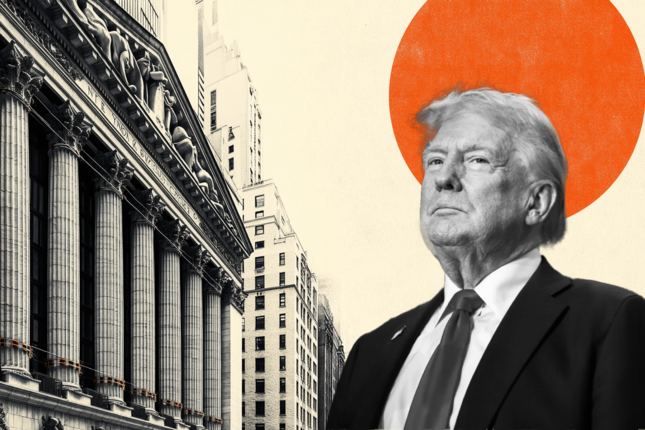Wednesday’s stock market session was a rollercoaster, swinging wildly as the Federal Reserve delivered a much-anticipated half-percentage-point rate cut. Traders initially cheered the move like it was Christmas morning, but the euphoria quickly fizzled when the Fed hinted they weren’t in any rush to keep slashing rates aggressively. The market, which had already priced in not just the 50-basis-point cut but was eyeing something juicier, got smacked with what can only be described as a dovish dud.
The new dot plot? It promises another 50 bps of easing by year-end (100 bps total, including today’s cut), but with nine Fed officials signalling a cap at 75 bps, it’s like we’re back to square one. Now the pressure is on growth to step up and justify sky-high market valuations. Every major data release until December will feel like a high-stakes economic health check. With inflation fears on the back burner, all eyes will turn to job numbers—the new battleground between the market’s thirst for more cuts and the Fed’s ‘wait-and-see’ stance.
Powell’s move was dubbed an “insurance cut”—just enough to keep things steady but not stoke fears of, “What does the Fed know that we don’t?” Unfortunately, the Fed’s economic visibility hasn’t improved much, and I’m not sure that inspires confidence. Powell wasn’t as dovish as the median 2024 dot plot suggested, emphasizing a cautious, meeting-by-meeting approach, insisting the Fed’s not on a “pre-set course.” But if you ask me, the likely path is a steady 25 bps cut at each meeting until March. A sensible decision met with a measured market response, though tinged with disappointment as the Fed remains data-dependent.
Now, all eyes pivot to the Bank of Japan (BoJ) for Friday’s rate guidance after the recent chaos in the carry trade unwinding. Don’t sleep on the PBoC, either.
The BoJ sent shockwaves through the Tokyo market in July with its second rate hike in four months and hawkish forward guidance that hit like a financial tsunami. Another hike this week is off the table—that much is clear. But Kazuo Ueda has a tightrope to walk. He needs to deliver forward guidance that keeps the notoriously wild-child USDJPY in check, allowing the yen to appreciate on a slow, steady path while avoiding a wealth effect meltdown by toppling local stocks.
China’s property market is suffocating under the weight of deflation, with the ominous shadow of a decade-long recovery looming large. History’s script for housing market collapses around the globe suggests it could take China years to climb out of this bursting bubble—and that’s if property prices even see the light of their pre-crash highs again. The real risk? This deflationary spiral might be deeper and longer-lasting than anyone’s bracing for.
SPI Asset Management provides forex, commodities, and global indices analysis, in a timely and accurate fashion on major economic trends, technical analysis, and worldwide events that impact different asset classes and investors.
Our publications are for general information purposes only. It is not investment advice or a solicitation to buy or sell securities.
Opinions are the authors — not necessarily SPI Asset Management its officers or directors. Leveraged trading is high risk and not suitable for all. Losses can exceed investments.
Recommended Content
Editors’ Picks

EUR/USD under pressure below 1.0400 on persistent USD strength
EUR/USD remains deep in the negative territory below 1.0400 on Tuesday, erasing a portion of Monday's gains. The pair is undermined by risk aversion and the persistent US Dollar demand, fuelled by US President Trump's tariff threats.

GBP/USD stays below 1.2300 after UK employment data
GBP/USD stays under bearish pressure and trades below 1.2300 on Tuesday as the USD preserves its strength following US President Trump's tariff threats. The data from the UK showed that the ILO Unemployment Rate edged higher to 4.4% in the three months to November.

Gold trades at multi-month highs above $2,720
Gold gathers bullish momentum and trades at its highest level since early November above $2,720 on Tuesday. The benchmark 10-year US Treasury bond yield is down more than 1% below 4.6% following US President Trump's tariff threats, helping XAU/USD hold its ground.

Bitcoin fails to sustain the $109K mark after Trump’s inauguration
Bitcoin’s price steadies above the $102,000 mark on Tuesday after reaching a new all-time high of $109,588 the previous day. Santiment’s data shows that BTC prices quickly corrected, as social media showed major greed and FOMO among the traders in Bitcoin after President Donald Trump’s inauguration.

Prepare for huge US trade changes as Trump goes America first
You can be sure that big changes are coming as far as US trade is concerned, even if we didn't get any new tariffs on President Trump's first day in office. A comprehensive investigation into US trade relationships was initiated via a memorandum. China, Canada, and Mexico are clearly in the immediate firing line.

Trusted Broker Reviews for Smarter Trading
VERIFIED Discover in-depth reviews of reliable brokers. Compare features like spreads, leverage, and platforms. Find the perfect fit for your trading style, from CFDs to Forex pairs like EUR/USD and Gold.